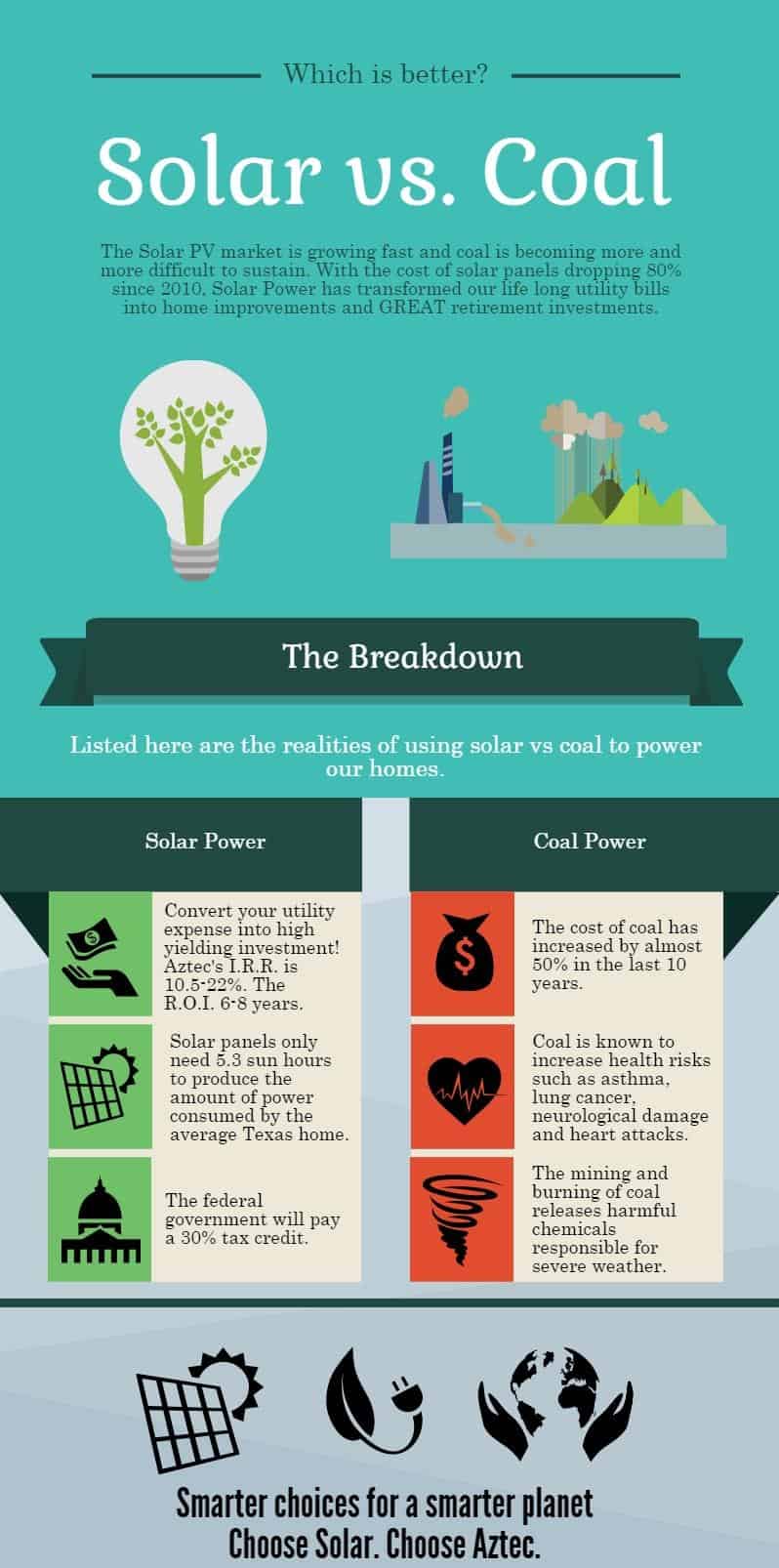Solar Power vs Coal Power

Solar Power vs Coal Power: Which is better
With all of the advancements in technology, we cannot ignore the ever evolving advancements in renewable energy. Photovoltaic solar power has become an increasingly affordable, reliable, and clean energy source [1]. Solar power needs to be further encouraged throughout the nation as a reliable, affordable source of energy. You can even now get something like these Deep Cycle AGM Solar Batteries to help you to help you out with your solar energy. With the dangers and cost of coal rising, the need for a new source of energy is becoming more evident.
Coal is a primary source of energy for Americans. It is used to power our homes and businesses. However, we need to find a new, safer energy source for the years to come. According to Health Research Funding, the burning of coal is related to “increased cases of lung cancer and asthma” [2]. The health risks of coal don’t even account for the biggest cost related to coal that is global warming. Mining coal is the second largest methane emitter and has the most carbon dioxide which is the largest contributor to global warming [2]. Burning coal also runs the risk of releasing harmful chemicals that are responsible for acid rain [2]. Coal is dangerous and needs to be used sparingly. Reducing the use of coal can change the effects that coal emissions have on us.
Coal is also non-renewable and expensive. The U.S. Energy Information Administration says that in 2012 it was estimated that there was “enough coal to last 253 years” [3]. But, if the coal production rate continues to increase, then there may only be enough coal to last 180 years [3]. The cost of coal transportation is also expensive and rising. According to the EIA, more than 70% of the United States’ coal is transported by trains. The cost of this transportation has “increased almost 50% in the United States from 2001 to 2010” [4]. The cost of coal is expected to rise. Soon, coal will not be as affordable as everyone thinks.
Green energy is becoming a trend in America. The sun is always available and solar power offers energy independence. Renewable energy conserves the coal we have remaining and helps the environment by not producing the pollution that normally comes from powering our home. While sunny locations in the southern half of the United States can produce enough electricity to power an average home, an average photovoltaic system can still generate 85% of the average electric consumption [1]. Solar panels only need 5.3 sun hours to produce the amount of power consumed by the average Texas home in a 24-hour period. Solar panels are commonly installed as roof mounts, but can also be installed as ground mounts or pole mounts. Recently, they have been seen as carports and have proven to be multifunctional.
Solar power is becoming more affordable every day. The cost of solar dropped 17% in 2010 and an “additional 11% in the first half of 2011” [5]. The government has also created incentives to persuade Americans to purchase solar power in an effort to go green. The National Renewable Energy Labs reports that the average 5.1 kilowatt residential system typically runs at $4.39 per watt [6]. This adds up to $22,389. With incentives, this price can drop significantly. The federal government will pay a 30% tax credit that will total $6,716.70 [7]. This incentive bring the cost of solar panels down to a total of $15,672.30. Aztec Renewable Energy offers additional discounts as we are volume solar installers.
Renewable energy sources, such as solar power, simply make sense. We can make a difference in America’s pollution production and save money by investing in solar power. Compared to the continued use of coal and the harms that comes with it, solar power is a bargain. By becoming more aware of the technological advances and doing our part, we can make America a healthier and safer place to be.
To learn more go to www.aztecwindsolarpower.com
Sources


